Understanding the breaker scheme is important if you plan on designing a substation. Quite often, it is overwhelming to make sense of the entire scheme at a glance. Therefore, the figure below depicting a circuit breaker scheme will be used to simplify and explain various elements of the breaker’s design and its control.
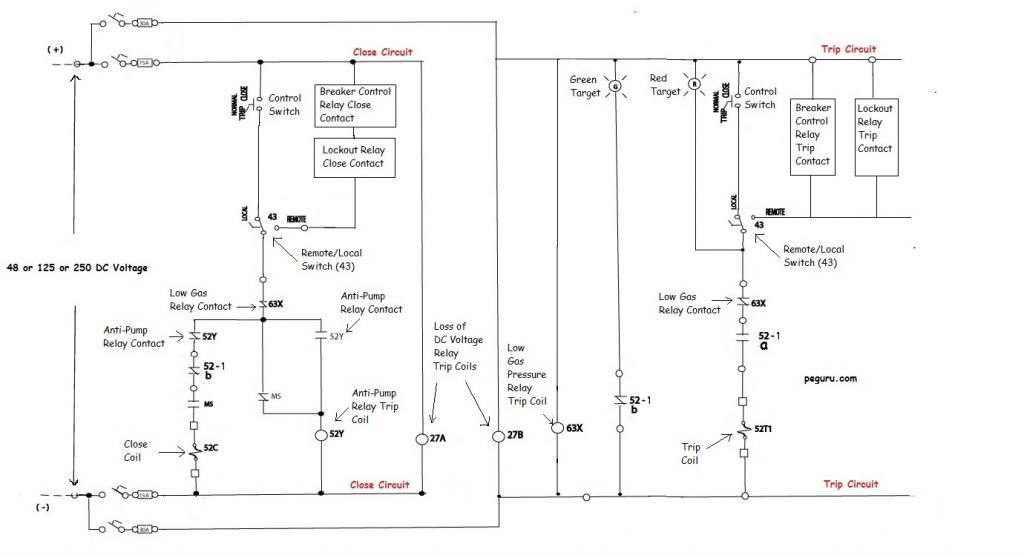
Forms of Contact
Before explaining what each device in the scheme does, understanding the different forms of auxiliary contact is necessary. Every breaker comes fitted with an auxiliary switch. It is mechanically linked to the breaker’s trip-close mechanism. Within the auxiliary switch case you can have either form ‘a‘ contact (a.k.a. 52a per ANSI) or form ‘b‘ (a.k.a. 52b).
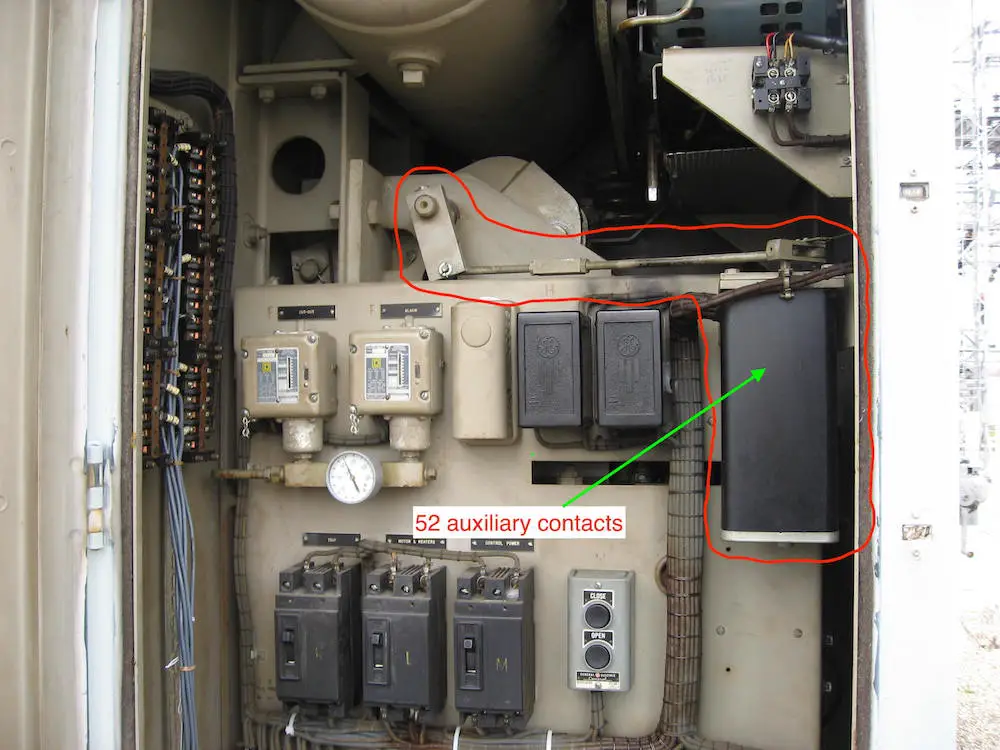
A form ‘a‘ contact represents a Normally Open (N.O.) contact. Thus when the breaker is open, its 52a contacts are open. When the breaker is closed, the 52a contacts are closed. The 52a contact follows the status of the breaker.
A form ‘b‘ contact represents a Normally Closed (N.C.) contact. It operates exactly opposite of what an ‘a’ does. When the breaker is open, the 52b contacts are closed. When the breaker is closed, the 52b contacts are open.
With the 52a contact in the trip circuit (as shown in the scheme above), once the breaker opens, this contact opens too. Now no matter what the relays do, the trip coil is isolated. On the flip side, with the breaker open, the 52b contact in the
Apart from breaker auxiliary switch contacts, you will see relays such as anti-pump relay 52Y, low gas relay 63X, under voltage relay 27,
Circuit Breaker Trip Scheme
For the trip circuit, you must wire the tripping relays’ ‘a’ contact in parallel. See Figure 2. Therefore when
Modern power circuit breakers employ Sulfur Hexa-Flouride (SF6) gas to extinguish an arc. Without adequate gas i.e. reduced interrupting capability, a flash-over can occur inside the tank. To prevent flash-overs due to low gas, breakers are fitted with ANSI ’63’ relay. Tripping of breaker is cut out by this relay’s contact.
Most modern circuit breakers are specified with two trip coils. Energizing either one trips the breaker. Since a good amount of redundancy is built into the protection and control of a power system, it is not uncommon to see all primary relaying in the system tripping trip coil 1 and the back-up tripping trip coil 2.
At this point, I hope the reader has grasped the strategy of series-parallel placement of relay contacts.
Let’s look at other relays and switches from the trip circuit of our breaker. The 27B under-voltage relay trip coil is connected across the same DC source as the one feeding the trip circuit. When this supply is interrupted, the 27B relay coil is de-energized, operating its contacts. In our breaker, we are not blocking
Target Devices
Target lamps are used in circuits to convey certain conditions. With the breaker closed and energized, the red lamp illuminates to indicate a live breaker. When the breaker opens the green lamp illuminates – the circuit complete with 52b contact switching from open to close.
Now, you may notice the red target lamp is connected in a way that will essentially short out the tripping relays and trip the breaker. Not surprisingly, this is not the case. The target lamps have enough resistance in them (~200 ohms for a 125VDC circuit), limiting the current that can energize the coil.
Circuit Breaker Close Scheme
For this circuit, you must wire breaker control relay’s ‘a’ contact in series with a string of 86 lockout relay ‘b’ contacts before you hit the anti-pump relay in the
Modern breaker control relays are programmed to check for synchronism. That is, before the breaker is closed, the relay checks the phase angle of source and load side voltage of any one phase. If the angles are out of sync, the relay logic will not allow its close control contact to operate.
The close circuit also has contacts from the Motor Switch (MS). The motor is used to charge the spring that trips-closes. The motor switch contacts don’t allow the breaker to close until it finishes its job.
Details on how to develop a protection scheme
Alright! Enough theory. Want real world design implementation? Then checkout the ebook below. Industry popular 138kV Siemens SPS2 breaker scheme used. Relaying oneline for two different substations created from scratch to explain what trips, closes, and blocks close. Thank you for supporting this blog.
Circuit Breaker Control Scheme Aleen Mohammed
- Learn how to create trip and close scheme for a high voltage circuit breaker. Not just theory but practically implemented.
Anti-Pump Relays
To prevent inadvertent multiple closing operation, breakers are fitted with anti-pump relay (52Y ANSI designation). Assume a scenario where a fault persists on a line, and a person is attempting to close a breaker on it. Although the person presses the close button for a second or two, for the breaker which operates in cycles, this duration is an eternity. With the close button pressed, the breaker attempts to open and close multiple times. Since the motor in the breaker is not rated for continuous duty, serious damage can occur.
On a final note, keep in mind that not all relays back in the control building can handle the momentary inrush current from the breaker trip coil. Case-in-point the SCADA control relays. Interposing relays like those manufactured by Potter-Brumfield are typically installed to act as the middle-man. So in our case, the SCADA relay trips an interposing relay, and this relay energizes the breaker trip coil.
Most modern microprocessor relays, especially ones made by Schweitzer, can handle inrush currents up to 30Amps and thus can be wired directly to the breaker coils.
Summary
- Breaker scheme is a web of interlocked relays and switches.
- Breaker operation is controlled by relays and switches.
- Trip contacts are wired in parallel.
- Close contacts are wired in series i.e. breaker control relay ‘a’ contact followed by a series of LOR ‘b’ contacts.

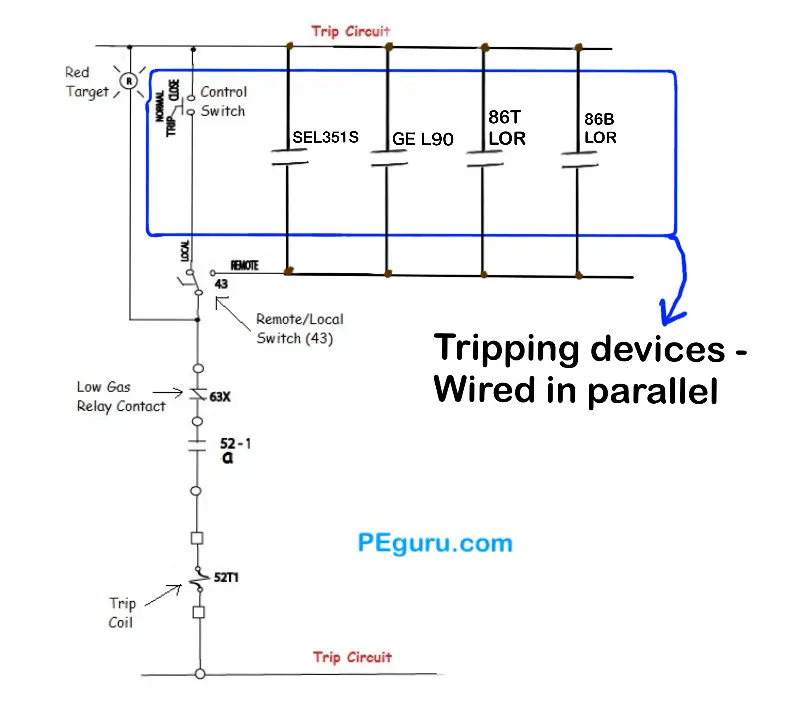
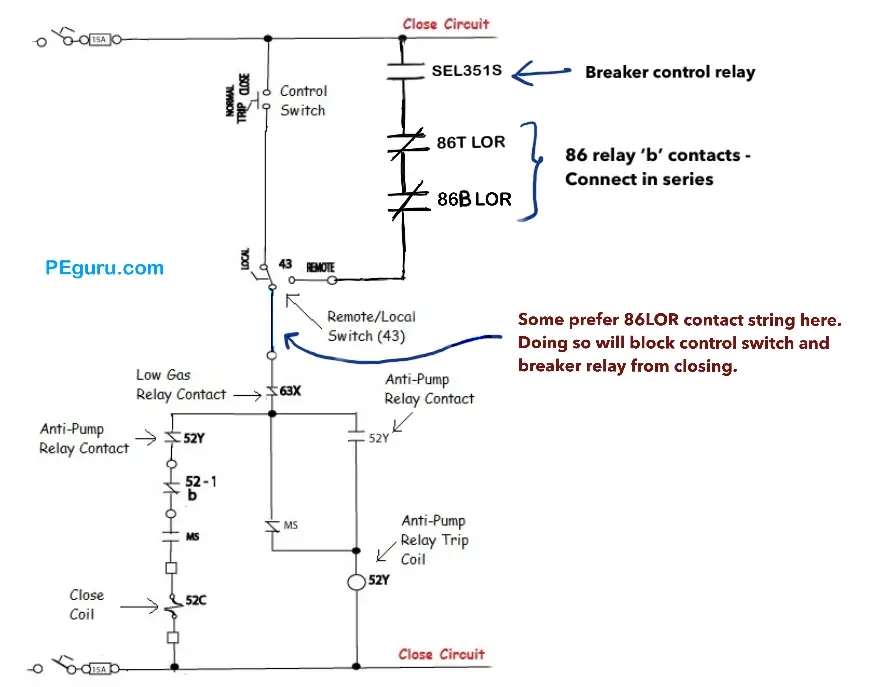
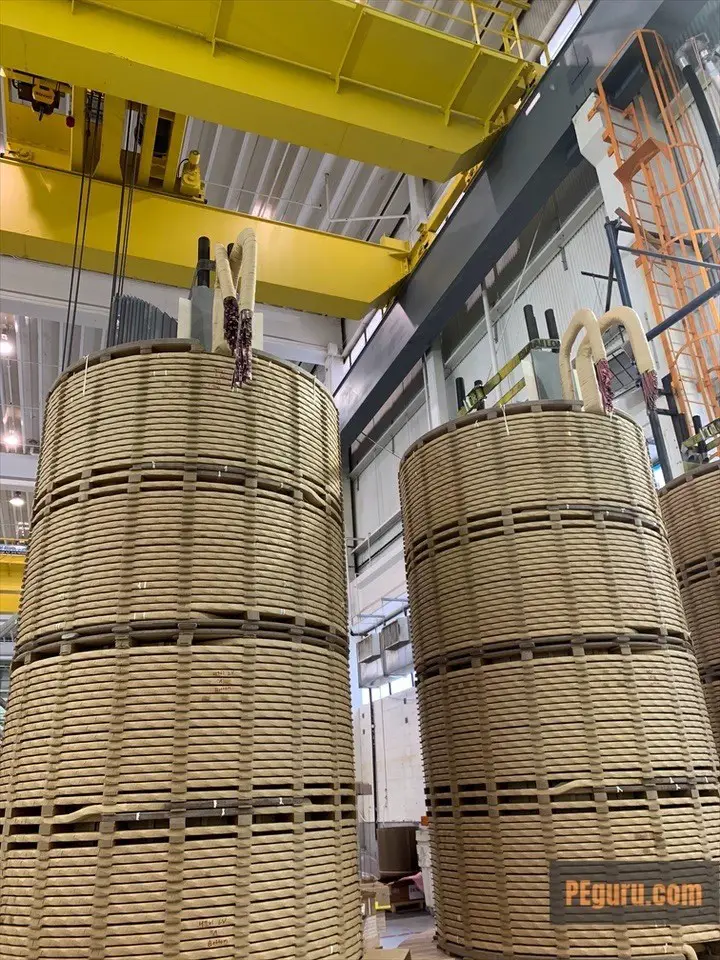

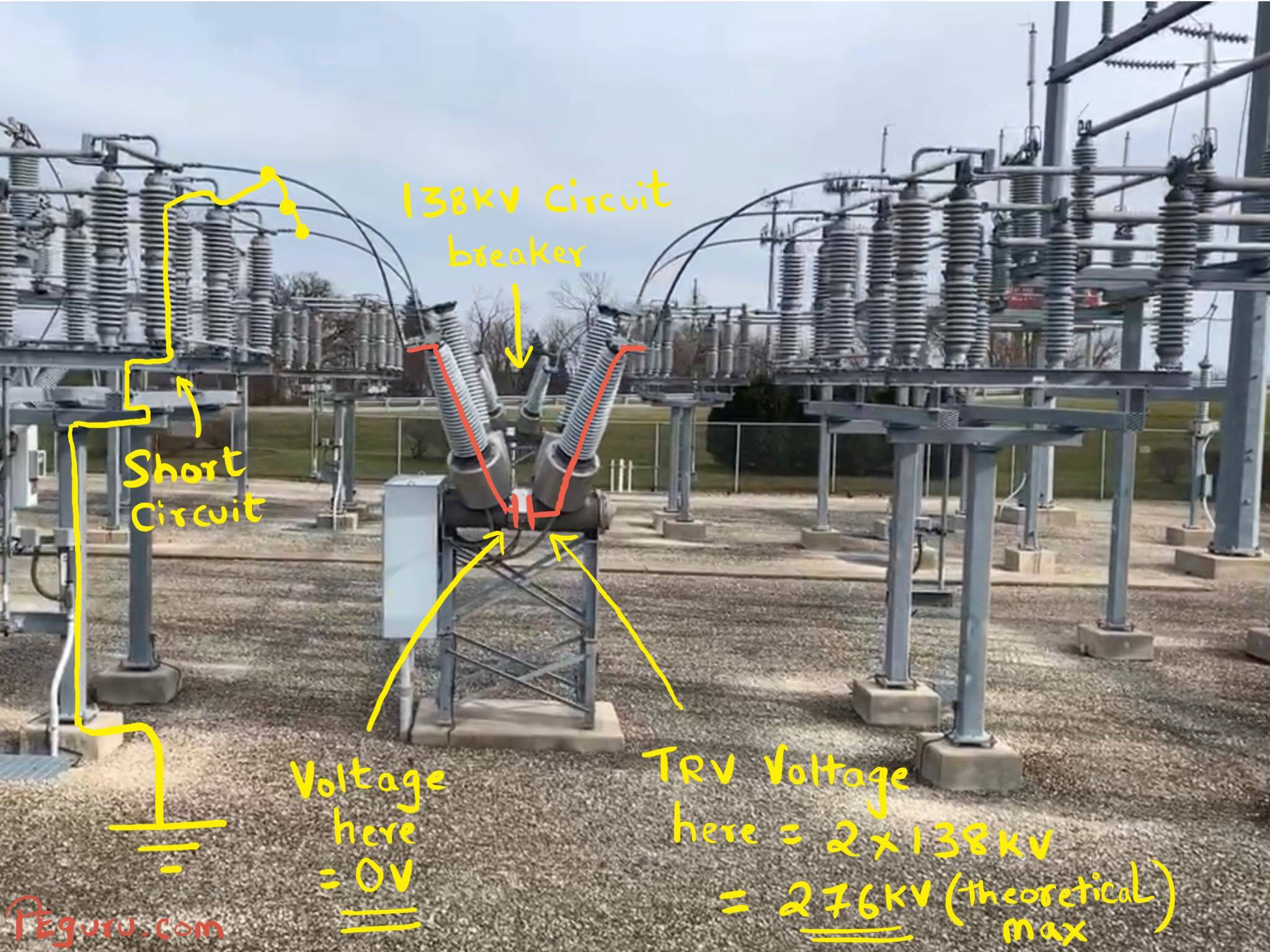
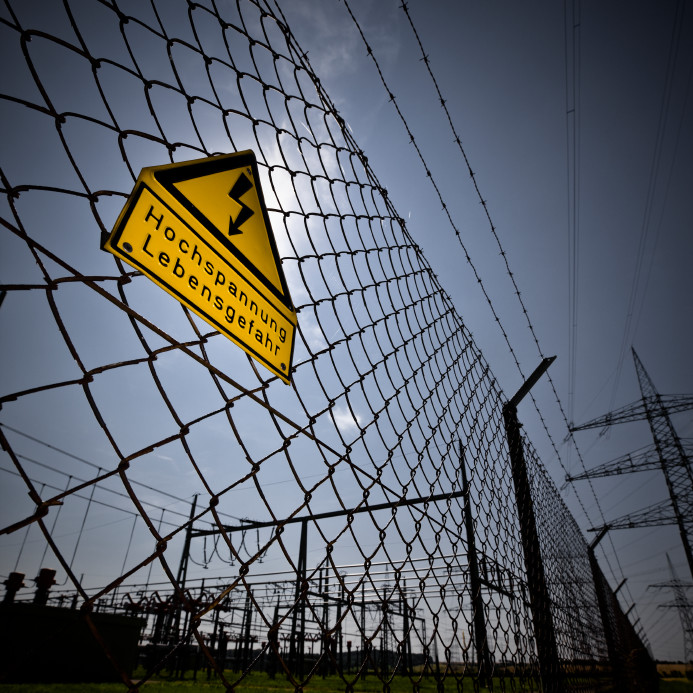

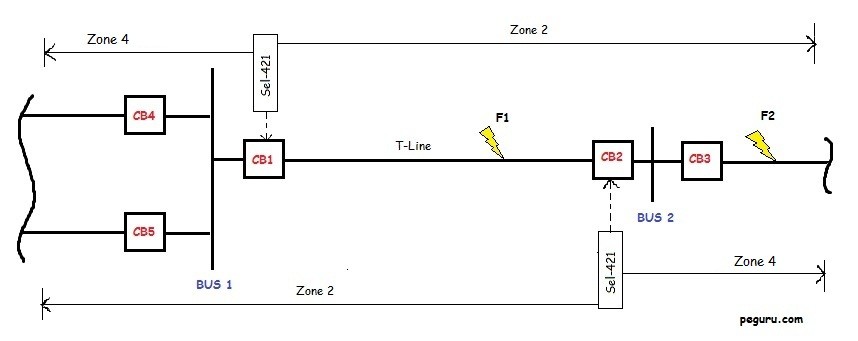
What is the function of ms relat
MS is the motor switch. The motor in the breaker kicks in to charge the springs. You don’t want to close when the breaker springs are charging. The MS contacts inhibit breaker operation when it is charging.
Hello!!!!! I want to connect two network by using CIRCUIT BREAKER but my circuit breaker is not closing .
i need some suggestions
Very good explanation illustration. I just notice that you have not mentioned the operation of MS. Kindly add to your explanation about the MS. Thanks
Could you explain MS contact in close circuit? I think ms contact connected wrong in this diagram.
ok, but 1 question. The schematic shows the circuit in a DE-ENERGIZED state. So, once the 2 switches on the positive rail and the negative rail are closed(ie power), do those 52a and 52b contacts change their states?
Thanks
For Relay purposes “CLOSED” does not necesarily always mean “POWER”…. It depends on the function and how everything is connected. The 52a and b contacts, are normally open, and normally closed, which typically refers to the position during normal operations when everything is working as it should. , however if the particular function, or operation fails, or trips, then the contact would then change state from open to close, or vice versa…….. So and example is if a relay contact is open, and there is a fault somewhere, or if the transformer fails, The contact closes, and would send a signal to trip a breaker, to protect it anything else on the system from getting fried…
Very cool description. It would be nice to show say a SEL351 feeder relay in here and showing the SCADA outputs, but this is great!
What a simple and brief description of CB control circuits.Be blessed with sharing
why two anti-pump relay contacts on close circuit …??
Thanx Article is very useful to understand basics of CB circuits 🙂
good article and great explenation and will pass on to my coworkers
explain the 86 functions and were to put the relays to